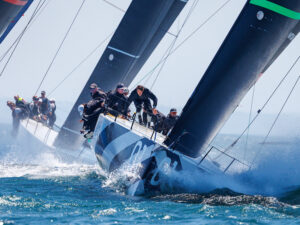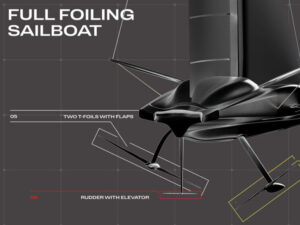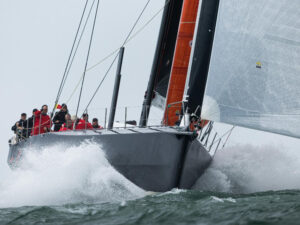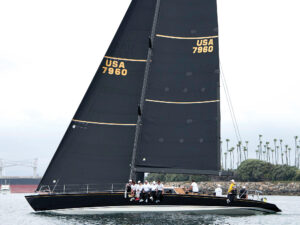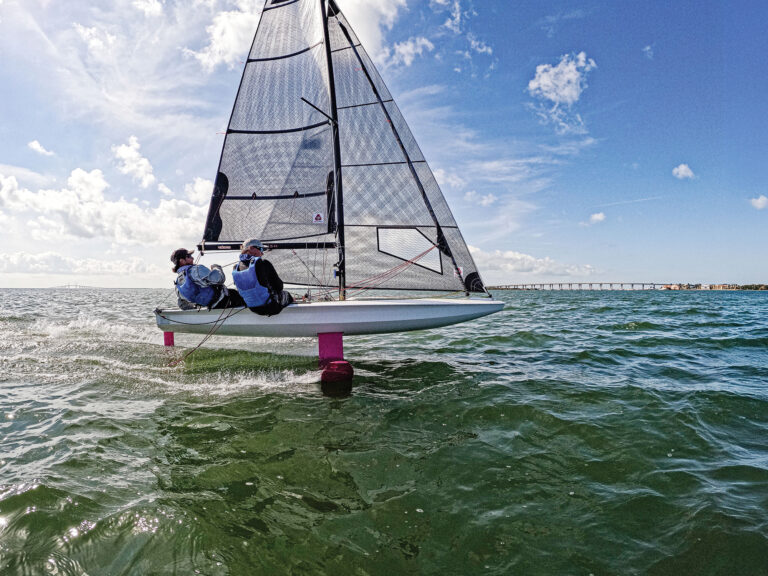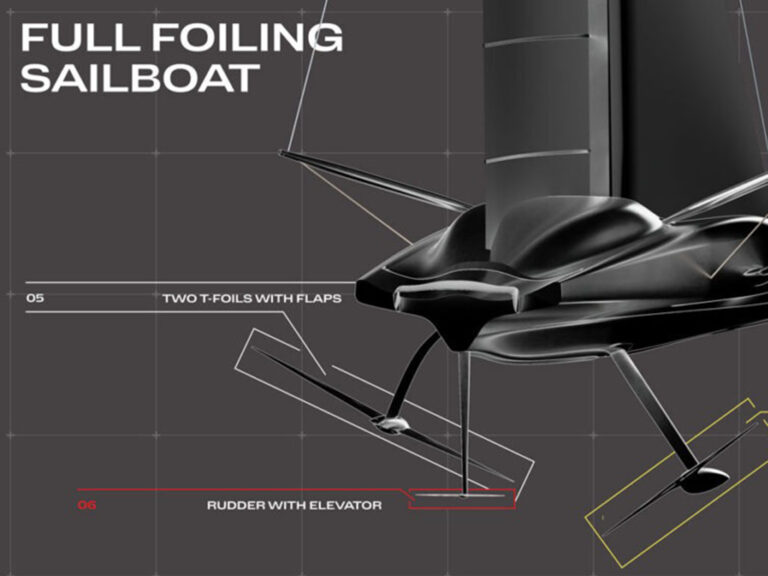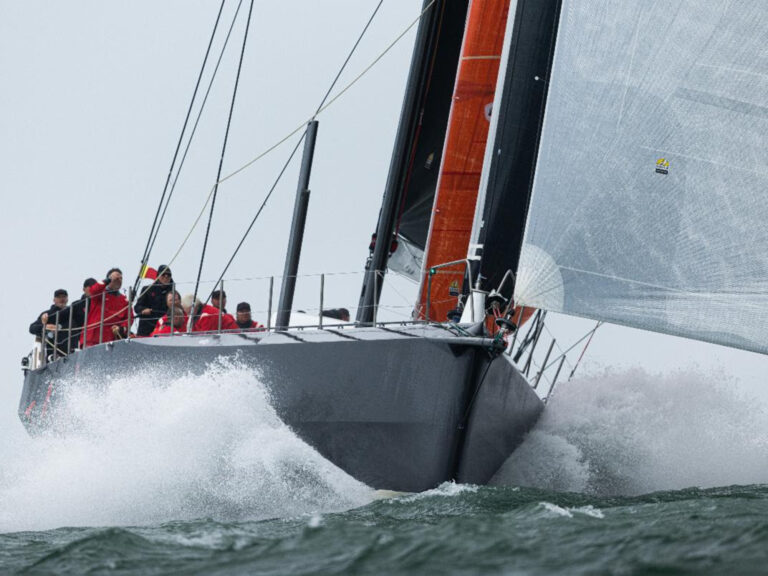MARI-CHA IV BREAKS 24-HOUR SPEED RECORDThe crew of Mari-Cha IV can breath a slight sigh of relief after accomplishing one of their first goals, the 24-hour speed record. Between 10:30 UTC on Sunday and 10:28 UTC on Monday, owner Bob Miller and his crew sailed 511.4 nautical miles, an average of 21.3 knots. This makes Bob Miller’s new Mari-Cha the first sail-powered monohull to break the 500-mile, 24-hour barrier. If the record is ratified by the World Speed Sailing Record Council (http://www.sailspeedrecords.com/), it will displace the previous record of 484 miles in 24 hours, set by the Volvo 60 Illbruck in the North Atlantic in April, 2002. For scale, remember that Tracy Edwards and the crew of the big cat Maiden 2 hold the outright 24-hour record, sailing 694.78 nautical miles at an average speed of 28.95 knots in mid-Atlantic in the summer of 2002.Miller, who is aboard for the Transatlantic, was understandably ecstatic about the day’s run. “What an amazing feeling,” he said in a press release from the boat. “We have designed and built this fantastic yacht with one aim in mind . . . to break records, and here we are on our first attempt and we have broken one already! I have a great team consisting of some of the best sailors in the world and together I’m pleased to say that we’re really showing what this awesome yacht can do.”All of us onboard are in high spirits, but the hard work is, as always, relentless. We are well on course for the transatlantic record, but will continue to push hard until we reach England.As Miller states, M-C IV is well on its way to breaking the Transatlantic record as well. The average speed for the current record holder, Bernard’s Stamm’s Open 60, was 13.73 knots, and as of Monday afternoon, Mari-Cha IV was pegging an average of 18.22 knots. Of course it hasn’t been all fun and games for the 22-man crew, on Saturday night the crew heard a thud and logged a drop in boat speed. Bowman Jan Dekker was sent over the weather side of the hull on a halyard to take a look at the 21-foot keel (canted at 40 degrees to weather and relatively easy to see) and reported a shadow on the keel, some type of impaled marine life. “We had to drop the jib top and go about backing the boat down so that we could get the poor thing off the keel,” reported helmsman Mike Sanderson. “It was a really successful mission for everyone apart from the fish, and soon we where back doing our frantic pace towards England.” Later that day, the luff rope parted on their Code 7, a tight-luffed reaching gennaker, sending the sail into the water. An all-hands effort was needed to retrieve the nearly 5,000-square-foot sail.With 1,224 miles to go as of Monday afternoon, Mari-Cha IV is more than halfway to the Lizard. Confidence on board is high that the weather will continue to be favorable and that they’ll be able to keep up the pace well enough to break the Transatlantic record of 8d:20h:55m:35s. Once the boat reaches the imaginary line off Land’s End, England, it will head to Cherbourg, France for some unfinished yard work before heading back across the Atlantic to spend the remainder of the winter in the Caribbean, perhaps even taking part in the St. Maarten Heineken Regatta and Antigua Race Week. To follow Mari-Cha IV’s progress, see http://www.mari-cha4.comROLEX INTERNATIONAL WOMEN’S KEELBOAT CHAMPIONSHIPYouth was served at the 2003 Rolex International Women’s Keelboat Championship, which concluded Friday in Annapolis, Md. U.S. Sailing Team member Sally Barkow, just two years out of Old Dominion University, won the regatta while 1993 MIT graduate Paula Lewin of Bermuda was second. Carol Cronin, who like Barkow is gunning for the U.S. Olympic berth in the Yngling, finished third.Barkow sailed consistently throughout the regatta. She was able to throw out her only bad score, a 15th plus a Z-flag penalty, and count only results of 10th or higher. Many top teams were hurt by starting difficulties-11 boats were black-flagged in the third race and Z-flag penalties were widespread-or disqualifications. Five-time champion Betsy Alison won the first two races and looked to be on the road to her sixth RIWKC crown, but her chances of victory were scuttled by a pair of black-flag disqualifications. She finished eighth. Local sailor Nancy Haberland had to count a Z-flag penalty after using her throwout to discard a black-flag result. She finished fifth.The regatta featured a variety of wind conditions. Thursday’s single race was run in winds that gusted to 30 knots, while Monday’s three races were sailed in 18 to 20 knots. Other days featured the light and shifty winds more commonly associated with Annapolis sailing.”We’re so young that we just want to do any racing we can for more experience,” said Carrie Howe, who along with Debbie Capozzi and Annie Lush, formed Barkow’s crew. “That’s why we came. It has been really helpful for putting us in different-sometimes tense-situations.”Howe and Capozzi, both of whom graduated from college last May, will crew with Barkow in the Yngling Olympic Trials this February. Many of the teams they raced against in this regatta will also be present at the Trials.For complete results and photos, http://www.race.annapolisyc.org/rolexkeelboatsHOBIE 16 CONTINENTAL CHAMPIONSHIPSU.S. Sailing Team members Paul and Mary Ann Hess put the experience they gained competing in the 2003 Pan Am Games to good use at the Hobie 16 Continental Championships. They took the lead on the third day of the five-day regatta and never looked back, finishing with 61 points, 27 fewer than the second-place team, Armando Noriega Jr. and Rodrigo Achach of Mexico. In third was Wally and Tyler Myers while 2000 470 silver medalist Bob Merrick, sailing with Eliza Cleveland, finished fourth.The top 13 American boats qualified for the upcoming Hobie 16 Worlds in Mexico.Results are at http://www.hobie16cc.com/, though at press time the website was not responding. Pictures are at http://www.aquacanvas.com/INTERNATIONAL CATAMARAN CHALLENGE TROPHYFor the first time since 1976, the ICCT came down to the final match in this best four-out-of-seven finals before the champagne was uncorked to spray the winners and award “The Little America’s Cup” for the 23rd time since the event was created in 1961.The finals were sailed off Newport’s Goat Island providing a perfect view of the competition. Defenders John Lovell and Charlie Ogletree, representing Southern YC, held a 3-2 lead heading into Saturday’s racing. In the first race, the challengers (the Italian team of Daniele Saragoni and crew Teo Di Battista, representing Club Nautico Rimini) appeared to have control of the start as they took a slight lead off the line on the windward-leeward course. After two very tight laps around the course, the Italians were first to the finish line by 15 seconds to tie the score at 3-3.In the deciding race, which would be sailed three times around the course, Lovell and Ogletree crossed the start line first and never looked back as they opened up a sizable lead on the Italians. Undaunted, Saragoni and Di Battista whittled down the distance and by the last leg had closed the minute and twenty gap to five seconds for a nail-biting finish close behind Lovell and Ogletree.”I’m very excited by this win,” said Lovell. “Saragoni definitely had an edge with the boat, as this is only my third time in an F-18HT, which is much narrower than a Tornado, making it harder to gybe downwind and less stable in general”More info at http://www.icct2003.org or http://www.littleamericascup2003.org.AUSTRALIAN CHALLENGE FOR THE AMERICA’S CUPA syndicate named OzBoyz Challenge has been has been created to challenge for the America’s Cup in 2007. Details are still sketchy, as the official launch doesn’t occur until Tuesday, Oct. 7, when the syndicate has scheduled a virtual launch on the Internet at 0200 GMT. A warning to anyone seeking information about the challenge prior to Tuesday’s launch, as the intrepid staff of GPS did this morning: you’re likely to come up with an adult website devoted to Australian men.SAIL FOR HOPE REGATTAIt would be easy for someone who didn’t know the players, the event, and the area, to think of the third annual Sail for Hope regatta as a bit of a carnage fest. After all, two boats were dismasted and a 110 class sloop ended up in splinters after 30-knot breezes blasted the 98-boat fleet near the end of the race. But thanks to great management by Sail Newport, a heads-up race committee, and a web of safety vessels, no one was hurt, most everybody had a hell of a good time, and over $20,000 was raised for local Rhode Island charities, and for the Jamie Boeckel Memorial Safety at Sea Fund.Created three years ago in the direct aftermath of the 9/11 attacks and originally named Sail for Pride, Sail for Hope is a popular end-of-season celebration and fundraiser. Boat owners put off hauling, professional and amateur crewmembers donate time and money, and everybody gets one last sail around Rhode Island’s Conanicut Island as well as a party at the International Yacht Restoration School after racing.This year’s Sail for Hope race began with a downwind start, with racers heading north under the Newport Bridge. The smaller, slower boats started first, with some rounding the northern end of Conanicut Island, three miles away, before the big boats and fast multis even started nearly 50 minutes later. Rain squalls, with brief blasts of wind up to 22 knots, made for a quick run up the Bay for most. The beat down the West Passage of the Bay saw the bulk of the fleet head west for the mainland shore to get out of tidal current, and to pick up a strong right-hand shift. By the time the big boats and multis rounded the mark southwest of Conanicut’s Beavertail Point, the wind had piped up to 30 knots, which made for tough going for the fleet.First to suffer a breakdown was Caliente, a Formula 40 cat that had a headboard pull out of their main. Then Tom Rich’s Settler, a Peterson 42, suffered what looked like a headstay failure that caused the top of their rig to crumple. Then, a multihull that was sailing as an unofficial entrant, pitchpoled, launching a crewmember so far away from the boat that he decided to swim for the beach at Beavertail rather than swim back to his faraway ride. Next to suffer was the 110, which swamped near the Beavertail buoy and was cast upon the shore after the crew was removed by bystanders and a Coast Guard 41-footer. Shortly after rounding the mark and setting the kite, a Melges 24 driven by Sail Newport’s Brad Read, snapped its backstay and dropped its rig. “We bore off, set the spinnaker, and immediately planed off,” said Read. “We must have been going in the low to mid-20s and having the ride of our lives when we heard a sharp report. The backstay broke two feet from the top of the rig, the weather spreader crumpled like a piece of cellophane, and the rig broke 4 feet up from the gooseneck. A boat next to us said that we were still fully planing when the tip of the mast hit the water.”Read gives great credit to Sail Newport’s Regatta Director, Kim Cooper, for keeping a cool head and coordinating the fleet of rescue boats spotted around Conanicut Island for the event. Talking with racers, the Coast Guard, and a fire/rescue boat from Jamestown on the VHF radio, Cooper made sure that all who needed assistance were helped and that all sailors were accounted for.Overall winner of the event was Team OZ, a Nacra 6.0 catamaran skippered by Richard Bliss. In fact, multihulls were in the top five slots. The first monohull overall was Scott Ferguson’s J/24 Calculated Risk. For complete results and images, see http://www.sailnewport.orgCANADA’S CUPFor the second time, the Royal Canadian YC won the Canada’s Cup with skipper Terry McLaughlin at the helm of his and Paul Phelan’s Farr 40 Defiant, beating Bob Hughes’ and his Farr 40 Heartbreaker. The race score was identical to 2001, 7 to 5, and many crewmembers were the same. In an exclusive interview, McLaughlin, a 47-year-old financial consultant in Toronto, talked with Sailing World’s editor, John Burnham today._Two excellent teams. What was the difference? _It was a good series. We won one race by 2 seconds and one by 1 to 2 feet. Both teams were pretty close to what they were in 2001. For some reason they seemed to have a little speed advantage on us when the wind was up, and most of the races were started in 15 to 18 knots. We adjusted some things and maybe closed the gap, but they have always been very fast. I think Heartbreaker was the fastest boat at the SORC last winter, so maybe their boat or keel is better than ours, but they seemed to have an advantage that we couldn’t completely eliminate. Fortunately we were able to counterbalance that by winning most of the starts and then either hanging on or, in a number of races, we got passed. By our count we only lost one start. We got going in the direction we wanted either ahead of them or at the right end of the starting line in 11 of 12 races._The final score was 7-5. Was there a key race or a turning point? _Not really. In the first race we led at the weather mark by a few boatlengths, but on the hoist they dropped their jib in the water and the halyard got over the bow. They had to take their spinnaker down to get the jib back aboard. That was sort of a gift for us. Then we went on to win the next two races, so we had a good lead, which was nice, but then before we knew it, it was three all. They came back and won three in a row, and on Monday, we had two fairly breezy races, and we were probably at our slowest. They won both fairly handily._You’d been in a commanding position, and now it’s even and you’re worrying about your boatspeed. _We made some changes after that day, which seemed to even things up. The next day we won the first race and then lost the second. Again, when they won they were passing us. So after Tuesday it’s 4-all. We won two races the next day, and now it’s more comfortable again-we only need one more. We went out the first race but then at the leeward mark we had a little miscommunication which let them get by us on the beat. I didn’t realize how badly Andy wanted to tack right and we were a little disorganized on the bow. Our bowman Ian Smith had hurt his back during the first race on Sunday, and our floater, Al Megarry went up and did the bow for the rest of the race; afterwards we had a doctor look at Ian and we concluded he shouldn’t race anymore.For the complete interview, see https://www.sailingworld.com/sw_article.php?articleID=2038Grand Prix Sailor is compiled by the editors of Sailing World magazine. If you’d like to subscribe, see http://https://www.sailingworld.com/ Contributing Editors: Tony Bessinger ([email protected]), Dave Reed ([email protected]), Stuart Streuli ([email protected]), John Burnham ([email protected]
